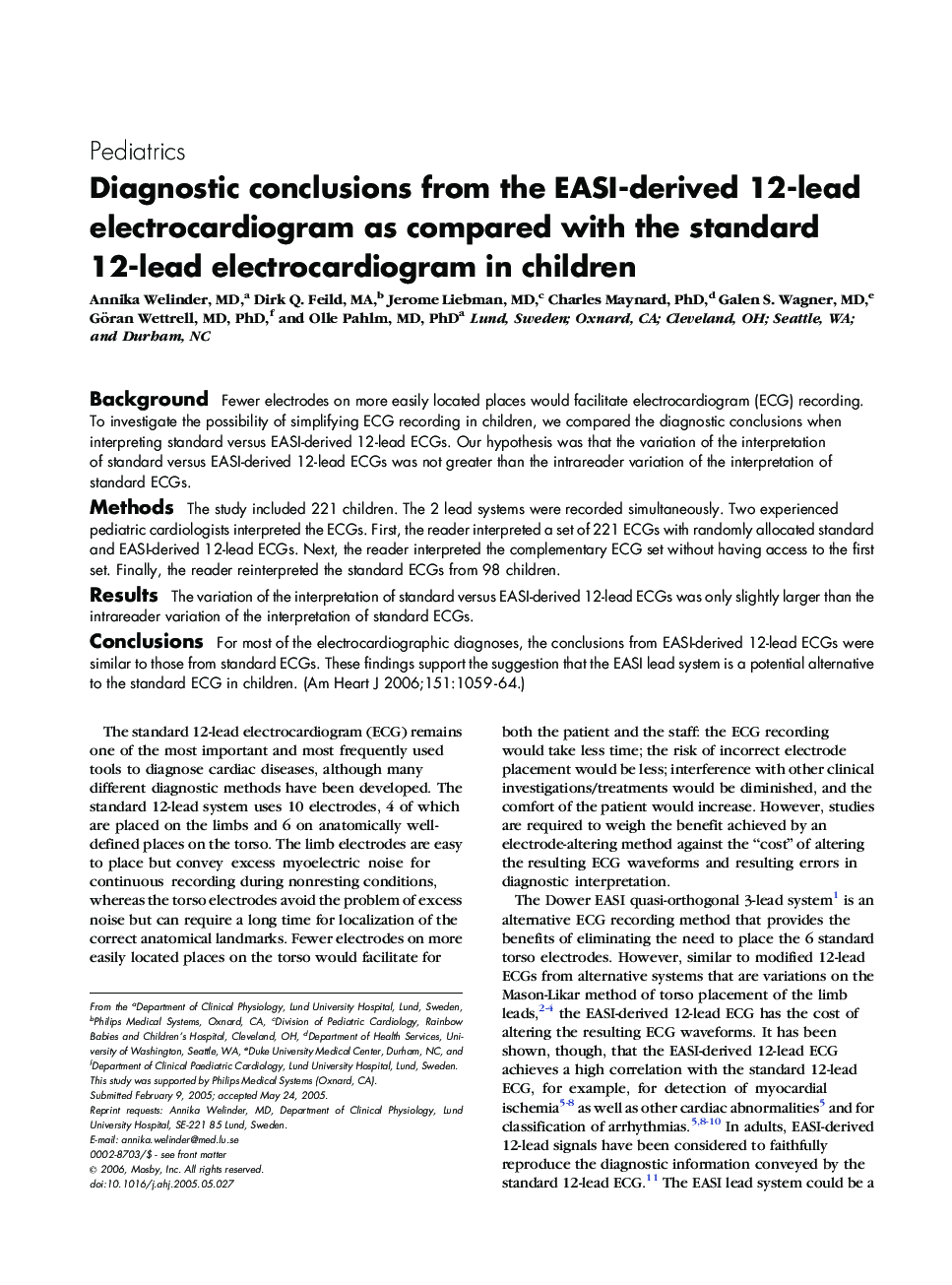| Article ID | Journal | Published Year | Pages | File Type |
|---|---|---|---|---|
| 2851190 | American Heart Journal | 2006 | 6 Pages |
BackgroundFewer electrodes on more easily located places would facilitate electrocardiogram (ECG) recording. To investigate the possibility of simplifying ECG recording in children, we compared the diagnostic conclusions when interpreting standard versus EASI-derived 12-lead ECGs. Our hypothesis was that the variation of the interpretation of standard versus EASI-derived 12-lead ECGs was not greater than the intrareader variation of the interpretation of standard ECGs.MethodsThe study included 221 children. The 2 lead systems were recorded simultaneously. Two experienced pediatric cardiologists interpreted the ECGs. First, the reader interpreted a set of 221 ECGs with randomly allocated standard and EASI-derived 12-lead ECGs. Next, the reader interpreted the complementary ECG set without having access to the first set. Finally, the reader reinterpreted the standard ECGs from 98 children.ResultsThe variation of the interpretation of standard versus EASI-derived 12-lead ECGs was only slightly larger than the intrareader variation of the interpretation of standard ECGs.ConclusionsFor most of the electrocardiographic diagnoses, the conclusions from EASI-derived 12-lead ECGs were similar to those from standard ECGs. These findings support the suggestion that the EASI lead system is a potential alternative to the standard ECG in children.
